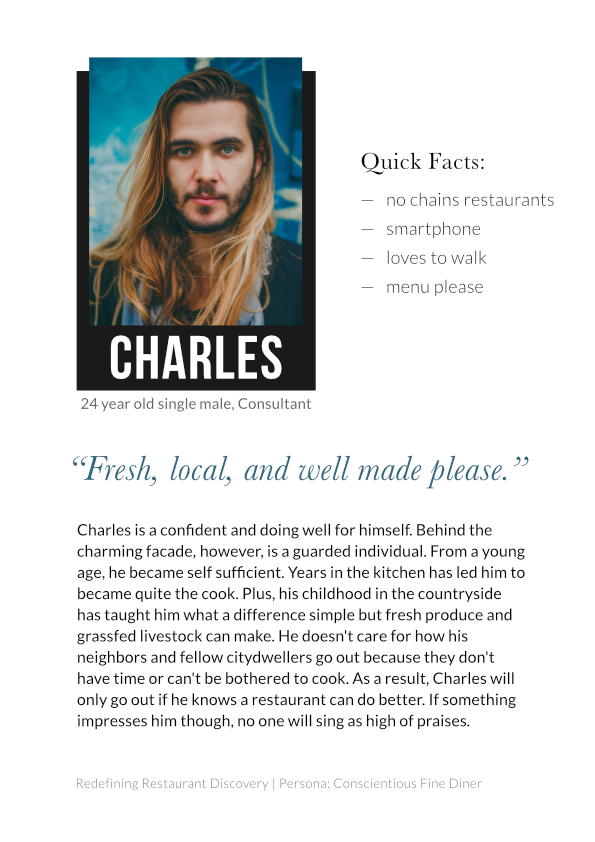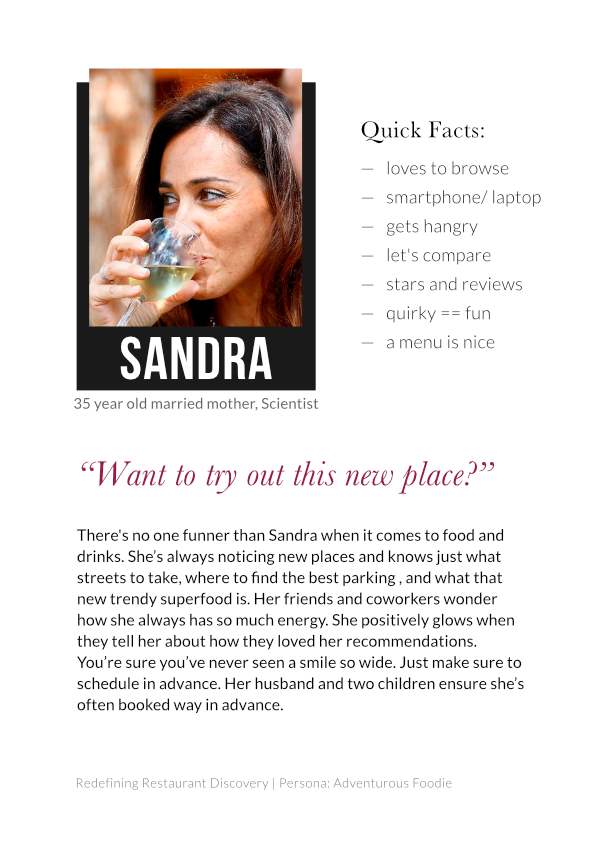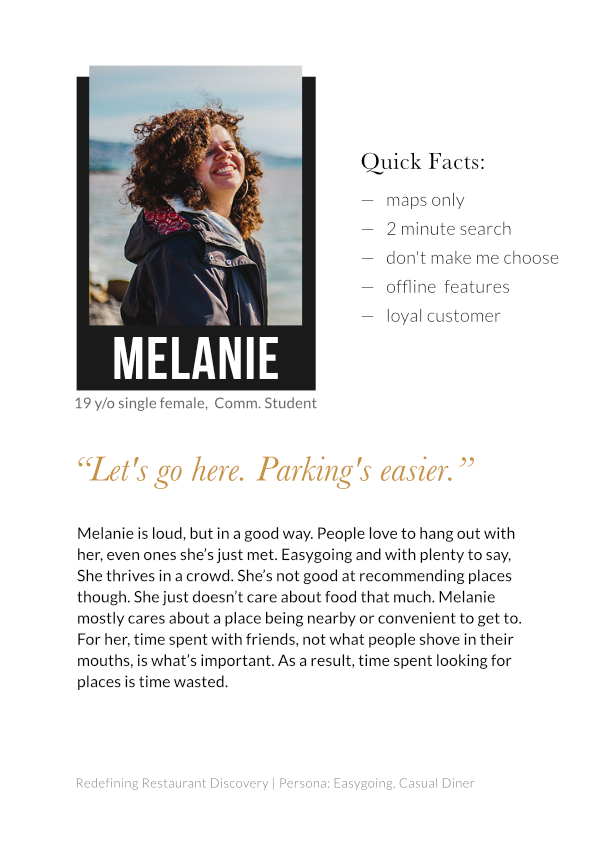These 3 personas (jump to detailed persona views) were created as a part of my learning project, Service Discoverer (actual name to be determined). This post explores how I came up with the three personas above as well as the various techniques I employed to get there.
Personas are great because they synthesize findings from various actual users (or potential users) and represent them during the design and development process. They allow for consensus of who to design for (and what functions to prioritize) company wide across all the teams. They are also highly memorable, which allows everyone on the team to anticipate how a certain feature or its removal would be received. Basically, the team won’t forget that they are NOT the user and to base decisions on actual users.
Steps towards Persona Creation
My first step was to create a few generic user stories on how and who I thought used web services/applications to discover new restaurants, bars, and the like.
Secondly, I conducted user interviews in person, via voice calls, and one through iMessage (her daughter was sleeping and that was when she was available).
The third step was to grabs the codes (highlights) from the various interviews– seven in all in this case– and create an affinity diagram. This diagram is useful because it provides a visual means to notice patterns among users or groups of users. The result is a diagram that provides user-based competitive analysis, information to create personas (yay!), and material to lists insights about our users and their range of desires, needs, and expectations and general principles to follow based on these details.
Finally, we get to fleshing them out!
Too much information and some made up
Based on my information, I had seven different types of discoverers. Not only was this excessive, but it prevented me from disassociating the interviewee with the created persona. So I forcefully merged several of them that fit logically together. They would be more unique and memorable as a bonus.
But what other attributes should be included? Despite all the articles online, I found it hard to go from the theory of what should go into a persona (and the plethora of examples) to actually determine what to include. First of all, how do I figure out their family situation, their profession, their age, and other details that aren’t determined by their behavior? Furthermore, how do I make them realistic and interesting?
I felt like I was just putting in slightly educated guesses and doing what I shouldn’t– assume. So I decided to look into another resource, literature and writing, at this point. One blog post about creating characters was perfect. Storytellers are masters of coming up with compelling characters.
The backstory makes them memorable, and more importantly, human
So I scrapped my huge table with lots of details to fill out. I just kept the names and the type of persona (fine diner, adventurous foodie, easygoing diner). Then, I went onto Flickr and looked for photos in the public domain that made me think of each name and type. With this starting point, I began to apply the blog’s advice about great characters.
The advice was not just to provide details, but think about the origins. A goal is insufficient. There must be emotional motivation which provides such a rich assortment of actions. To make it that much more interesting and plausible, we have to dig two steps further, figure out the “deep dark belief” driving the motivation and its origin. Thinking this way, it can become a bit tragic but it’s when you start going into this direction that you have a fully fledged complex human– believable and relatable– instead of the perfect Stepford persona who acts this one way because it represents certain users. We create empathy, so important to make sure users are being listened to when the project deadlines loom ever closer and stress spikes.
I was able to explore what drives the fine diner, the adventurous foodie, and the easygoing diner to behave the way they do. Their behaviors are no longer just anchored in what the research tells us, but also in a explanatory story. This reminds us that there is a story and to continuously try to put ourselves in our users’ shoes to understand where they are coming from in order to better deliver outstanding experiences.
Putting it all together
After coming up with a short quote to summarize their views, I wrote a short biography for each persona that explains their typical behaviors, motivations, and why. I wanted to paint a picture with scenes people can remember. Finally, I add “quick facts” to include some complementary information about each persona to highlight their likes and dislikes.
Placing their photos and names above, I was able to revise bio to create someone that not only felt plausible, but someone for whom I felt empathy and for whom I wanted to create an incredible experience.
I think this is way better than a long profile with plenty of tables. Something like that would require each member of the design team to study them. I wanted to have something quickly understood and afterwards used as an occasional reference.
Personas, version 1



Next steps:
Create detailed version (for more referencing) incorporating:
- strong reactions/ quotes
- typical behaviors
- pain points
- anecdotes

